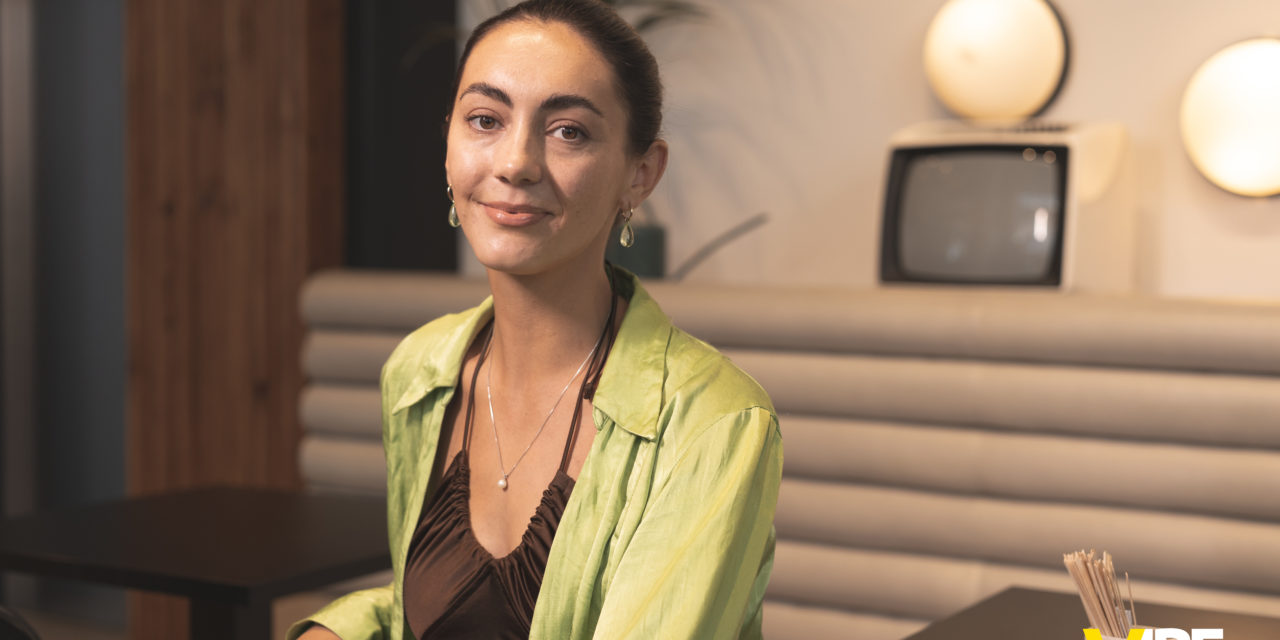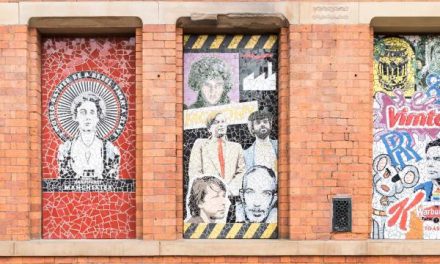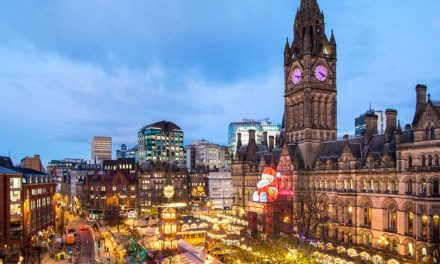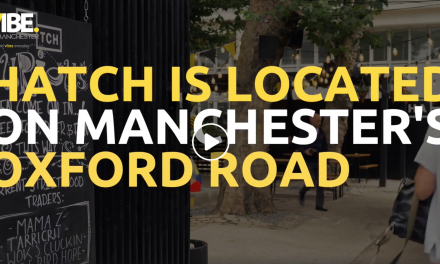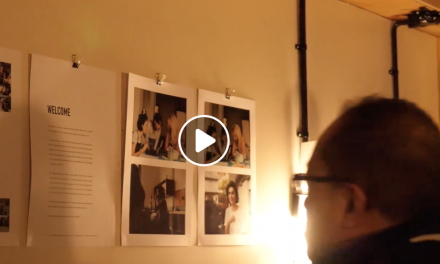Name: Natasha Emily Lynch
Age: 27
From: Salford
Lives: Greater Manchester
Contact: https://www.instagram.com/afosmcr/?hl=en, [email protected], https://www.artforoursakes.com/contact, https://natashaemily.co.uk/contact-1, [email protected], https://www.instagram.com/natasha_emilyl/
How did you first get into art? And how long have you been doing it?
My actually earliest memory of me doing art isn’t actually my memory I guess, it’s my parents memory of me being like, I don’t know, nursery age and just drawing all the time, just literally obsessively drawing and they actually asked my teacher is this normal, Natasha just draws all day long, because I was their first child. So they were, not concerned, but a little bit like if it’s normal behaviour kind of thing. So yeah, apparently I just would kind of obsess Simply make and create and stuff like that. I have a memory actually of a sunflower that I did in year two, and my teacher just being really obsessed with it. And it’s funny because I’m so drawn to natural materials and flowers at the moment with my practice.
So then obviously I went down an Art route, I did my foundation course in Manchester at the School of Art, I did my BA in at Chelsea College of Arts and then went back to do my MA at the school of art as well during COVID time.
So I guess Art is kind of more of an instinct, rather than anything else for me, definitely something that comes naturally that’s just kind of part of my being rather than anything that’s more of a forced, give it a go hobby. I feel like I’ve always maybe needed it to survive and that’s still the case today, it’s a need and a necessity. I think creativity is always a bit like an anchor for people and for me it’s like, if I’m in a bad mood, okay, why am I feeling like this? Normally, it’s because I haven’t painted or drawn or been connected to my practice for a while and then you paint and it’s like a homecoming of being like, Oh my God, yeah, I needed this.
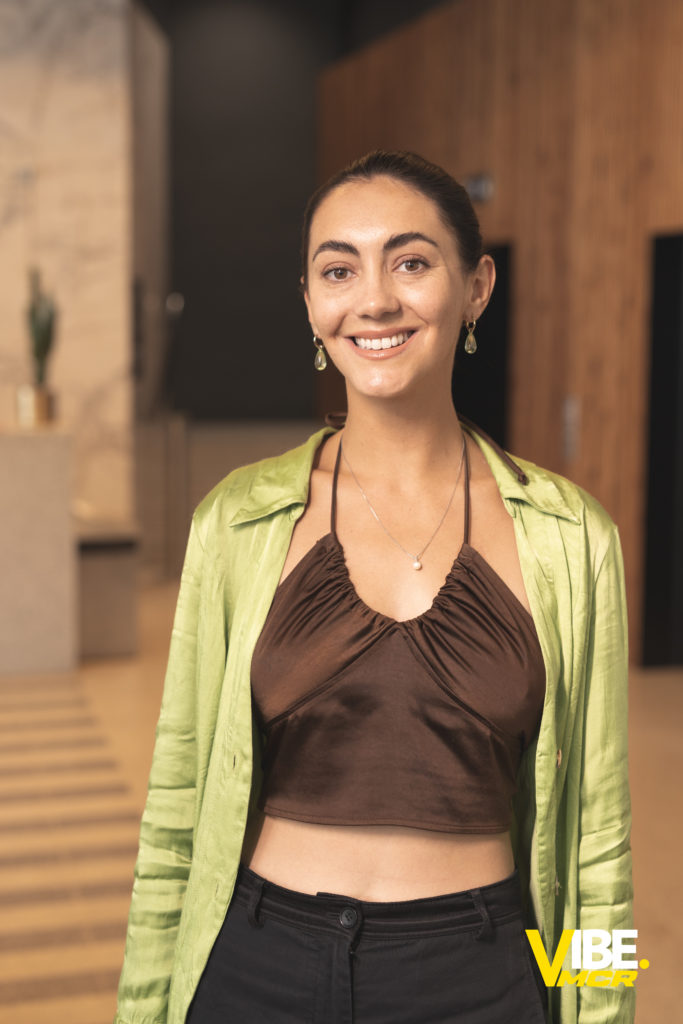
How would you describe yourself as an artist? how would you describe your artistic style?
I think a lot of my artwork has been to do with understanding my way of thinking and coming to terms with how I work as a person, it’s quite self-explorative. Particularly at University, I suffered with a big bout of anxiety and I was really on this personal quest in my artwork to understand how I work and how to self soothe. So that kind of led me after university to do really introspective work, like going on meditation, silent retreats, you know, not speaking for 10 days, or going to quiet places, and just taking myself out of things.
This year, I’ve been travelling more, I’ve actually only been home for a month out of the whole year, I’ve been making my home away from home. I spent the first two months in Norway. Then I was in France for two months, now I’m back in Norway. I just get a lot of inspiration being in a new environment in a new kind of energy. I like to just go to a place and see how it inspires me. And that tends to be how I get my work done. Unfortunately, I don’t have a studio at the moment at home, so I like to just kind of save up my creative thinking until I get to a place and then just explode in the month or so I’m in that place, I find it a nice way to work at the moment.
When I was in France, I actually negotiated with this person to paint a mural in exchange for my stay. So I stayed in the countryside in France for a month and created a mural for them. But that was self-initiated. Norway is the only place where I’ve stayed somewhere which is for artists. It’s pretty special, you can actually book it on Airbnb, it’s called Fordypningsrommet Fleinvaer on an island called Sorvaer in Fleinvaer, which is a archipelago of 300 islands, very small. But Bodo the nearest city is actually going to be the 2024 European Capital of Culture. So it’s a very special place to come to because it’s just incredibly creative and you have really interesting conversations. At the moment, there’s a biologist slash fine artist who’s here doing a wood carved ancient yeast creator for beer, just like mad things like that, it’s a really nice time to be here because it’s quite a nice creative energy. There’s also an artist that lives on the island he’s quite a well-known Norwegian woodcut artist and printmaker and graphic designer, he does a lot of stuff with the local city and while I’m here, I go to his workshop and do a lot of wood carving and lino printing. It’s kind of a place where I kind of get to do that more than I would do at home. I also exhibit when I’m in Norway. The last two times that I’ve been here culminated with an exhibition in the studio space where I sold pretty much everything that I made really which is great.
My work and myself have become so intertwined, so I’ve really figured myself out. Luckily, I don’t really suffer that much from anxiety anymore, my work is no longer about that. But it’s definitely still got this element of trying to understand my brain and what it looks like, when I’ve had a really busy, more stressful time of life, I can go to these quiet places, and say okay, what is at the very core of my thought process? and start stripping things back. My work is also massively inspired by nature and connection to nature but I mean, the self is so entwined with that, so it can be quite philosophical, but from more of a outside point of view, I’m really interested in exploring myself through my work, but then seeing how people respond to that. And, you know, if I’ve had joy from painting something, I like to see, okay, does that inspire joy in others? and that then leads in to conversations that might be a bit more philosophical or environmental or political, rather than the focus of my work being purely myself or just political or environmental.
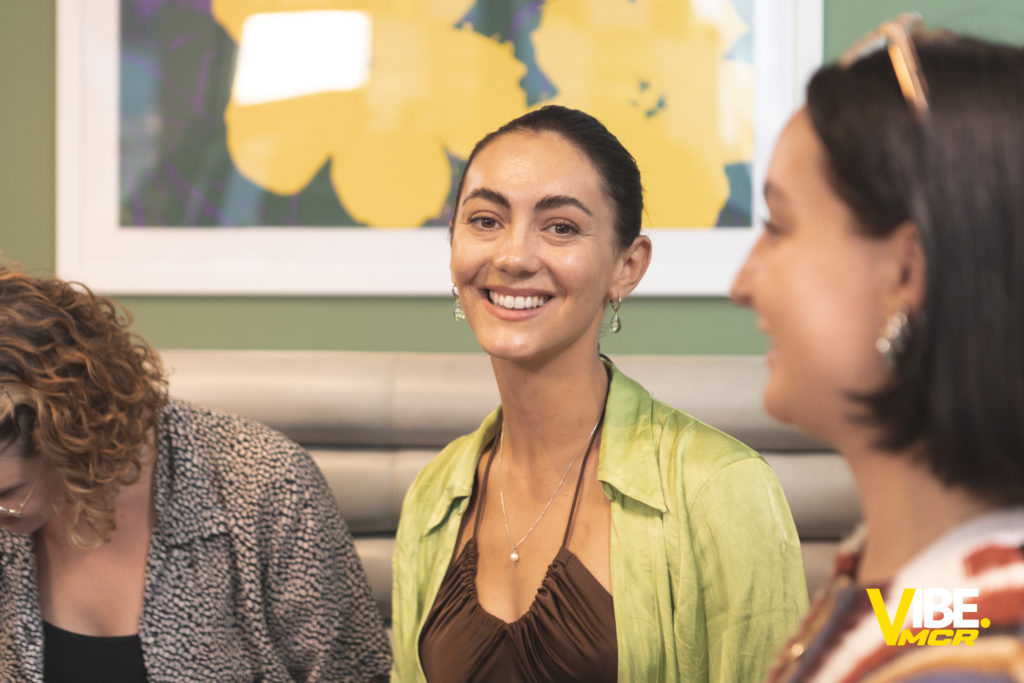
Who would you say is your favourite artist and what’s your favourite genre of Art? What has your inspiration been?
I really love surrealism Dorothea Tanning is really interesting for that. I really like Barbara Hepworth and Georgia O’Keeffe. Georgia O’Keeffe in particular, the big scaled up flower paintings that she did, I always go back to them, especially when I’m feeling a little bit lost I just absolutely love it. People like Anni Albers, my specialism at university was textile design, so people like her, the Bauhaus kind of way of thinking I really love. Sometimes I go back to that when I want to be a bit more experimental, or when I’m teaching and leading my own freelance tech classes, I definitely use like Bauhaus principles of teaching. It’s really varied, sometimes I’m inspired by non-artists, whether it’s scientists or, you know, reading environmental articles, or poetry. I like writing, I read and write a lot of poetry as well so sometimes it’s words that inspire me then sometimes it’s just straight up nature and skies and grass.
For me it’s not really about any specific medium, it’s the way of thinking, what am I trying to say? what medium am I drawn to to say it? What medium is it lending itself to? Maybe it’s ceramics, or maybe it’s a woven piece or a textile piece or maybe it’s a painting. I definitely tend to go more for painting, but it really can be anything at all. I’ve done some animation and paper cuts and it just depends on what I’m trying to say. I think that’s the important thing, rather than the medium itself. My main passion is absolutely painting, but that’s also been more logical and more of a practicality thing, especially over lockdown when I didn’t have access to printmaking facilities, so I kind of really anchored in on the painting. It just depends kind of the mood that I’m in and what I want to work with and what I’m excited to work with. Like here in Norway it’s wood carving, and liner printing, because I associate that with this island and I know I have printmaking facilities, which is a rarity. Having those at your disposal it makes you want to think more in this kind of graphic, black and white style, like and that’s really exciting, because that really contrasts with my more kind of illustrative, surreal kind of paintings that are really bright and have more in them. So it’s interesting that the place and your way of thinking definitely inspires the medium for me.
What are your thoughts on the art scene in Manchester? Do you feel it’s helped you to get where you want to go?
I was quite disappointed when I came back from London to Manchester, because I just couldn’t seem to find my people and an art collective or community kind of feel that I had in London, So I did my masters and started to get that again and it was really nice to connect again with other creatives. But I found that doing the Masters, the students were quite independent, and people very much had their own lives, so there was still this kind of frustration. So when Maddie and I had the idea for Art For Our Sakes it came out of this need to be back in a creative community and to also create these spaces where we could just put on exhibitions and just make it happen. Since then, I’ve finally found the creative spirit of Manchester because we’ve made this community and its just been so much stronger, connecting with creatives who have exhibited or come to the exhibitions, meeting them in real life, has just kind of strengthened that sense of belonging for me. And I think it’s really important, especially in a city that’s seen so much growth in a capitalistic way, like Manchester, for artists to occupy spaces and still have access to doing things for free. We don’t charge the artists to exhibit, we don’t put any kind of barriers up there and we try and always get venues that have the lowest cost or will do us a favour and do it for free because it will benefit them. So, it’s about creating community and almost rebelling against the city that’s changing almost into a mini London, it feels very money orientated at the moment, you’ve got a lot of offices, a lot of apartment blocks, it seems like these spaces that nurture artists and different communities and communities that have been here for a long time have almost been pushed out by that so it’s really an important time to fight against that and create this energy for emerging artists or unknown artists and harbour that and make Manchester stay a creative city, which it always has been. It has to keep that energy and at the moment and at the moment it is doing, its a very creative place, which is really nice.
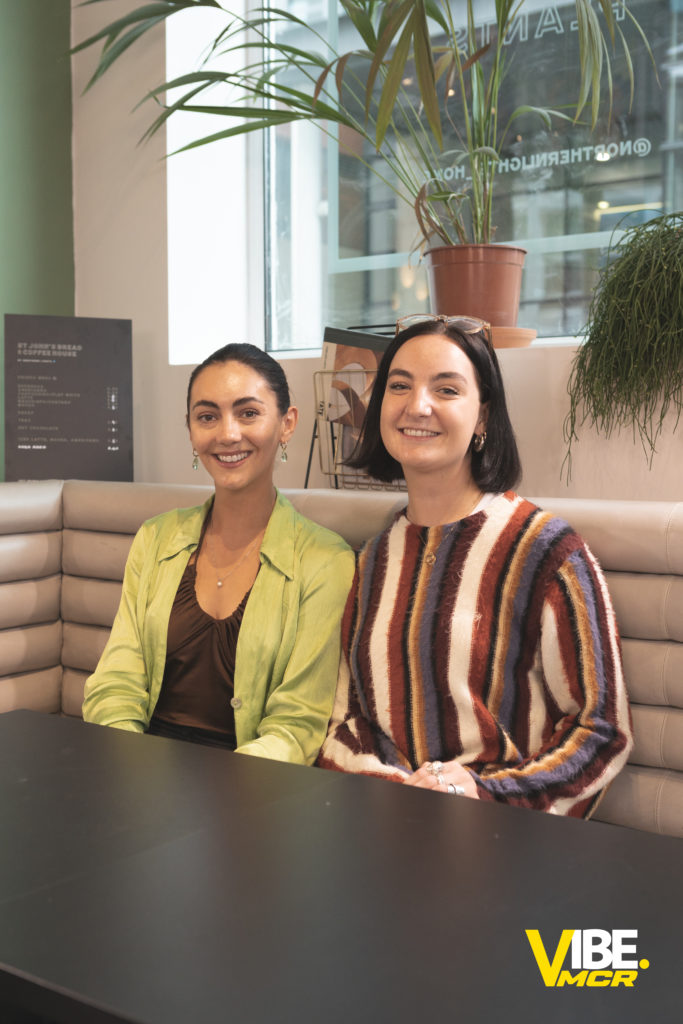
What are your thoughts on where the artworld is going? What changes, challenges positive and negative do you expect? How is it evolving?
It’s interesting to think about, and I’m not really sure, I think for me, on a personal level, the way I want to be spending any time within the art world is, is the way we’ve been doing it now, in a genuine way. I’m not that interested in the galleries and the way that art is on the global scale, you know, super elitist, Tate Modern, kind of vibes. It’s interesting to be at that scale, but I think my interest in the art world is keeping it as a community and really harbouring and nurturing that feel of what art is about and spaces where we can just have a genuine dialogue about art and not lose the humanity of it. Art is such a primal and instinctual thing, and it’s so important that people understand that. I think people need to keep trying to put on events and exhibitions and speak to everyone about art, and not just keep it as this, this ‘oh, you can only speak about art, if you have the terminology and education’. I think it’s moving further and further away from that, which is just amazing, that’s how it should be evolving. It’s definitely very capitalistic when you get to the higher levels, so I think trying to fight against that as much as you can is super important. There’s a value to art beyond money because you know, it’s literally your soul that you’re putting on to a piece of paper, so it should absolutely be valued and be special. I think that’s hopefully the way that the art world is going and with what’s going on in the world, I think more and more people are connecting to their roots of creating. We should really encourage more people to try the arts and to just express themselves, maybe it’s poetry, maybe it’s making films, whatever it is. It’s really just about harbouring this creativity through fighting against art funding cuts in schools and stuff like that, educating people.
With the amount of people that there are in the planet, there’s room for so many more people to be great, and to be doing amazing things. Doesn’t mean you’re necessarily aspiring to be the, the most famous artist on the planet. Of course, it would be nice to have success but you can definitely be successful without having that kind of fame. if the recognition comes in, if it’s genuine, then you know, you’re not going to argue with it wherever it comes from, however small. I think if you go in with the aim of I want to be the most famous person in the world at anything, then you’ve got it kind of wrong, in my opinion.
What would you say is the best thing about being an artist?
I think it’s just this feeling of you’ll always have something to fall back on in times of discomfort or joy, or any emotion that you go through in life, you’ve always got a way to reflect it and to understand yourself a lot better. I know myself through my making, and it helps me through uncomfortable situations. The pandemic, for me was so much easier, because I had my art and I painted more than I’ve ever painted before and it gave my life so much meaning. It’s just this really self-exploitative thing that you can do, and it’s just beautiful. I love creating work and seeing people’s reactions and helping them understand themelves better and I think it leads to so many beautiful conversations and connections with people that maybe you wouldn’t have if you didn’t express yourself creatively. I’ve taught beginners classes, and the connections that come from doing those and having this dialogue about ‘why don’t you try this in this way?’ And ‘what do you like about this?’ can just be really, really special. I think it’s definitely beautiful socially as well as personally.
I have a website if people want to get in touch and they can commission me to do pieces, I can work with people on whatever they want. I’ve done different things like beautiful weddings or people’s houses or you know, murals, stuff like that.
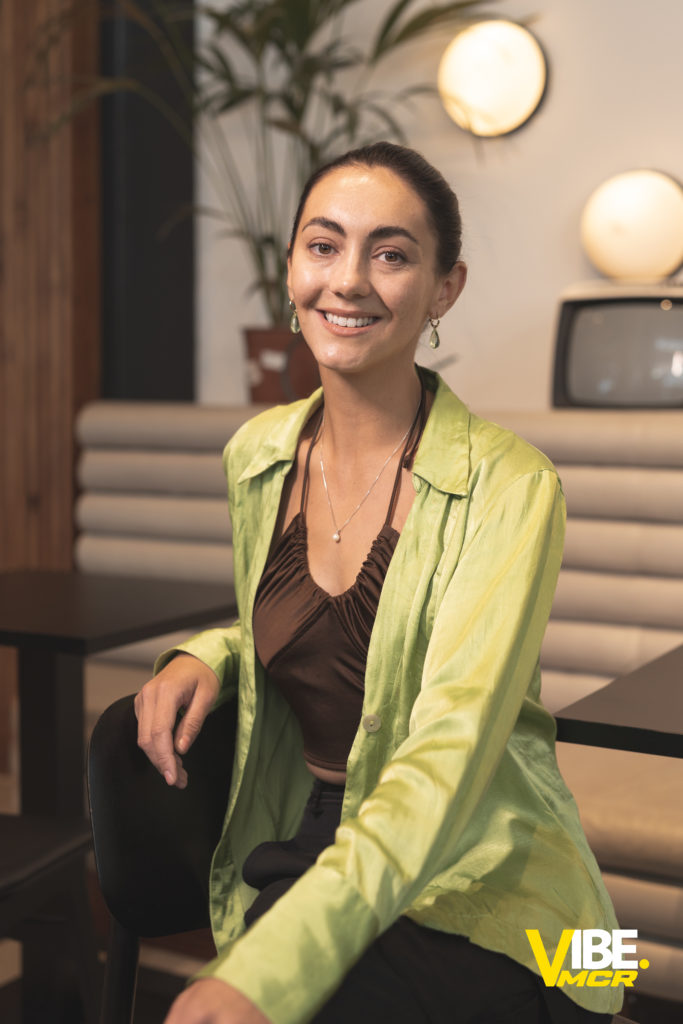
What would your advice be to aspiring artists?
Just practice, experiment, be as experimental as possible. If you’re stuck, just go back to the drawing board and rather than forcing anything, just see where you’re at and be experimental with materials. Try different things have fun, don’t limit yourself to any medium, really explore what surrounds you. You don’t have to go on these elaborate trips anywhere to be inspired. You can literally just go in a patch of grass in a park and get microscopic with that like and really examine the world around you, look for inspiration everywhere. Go out for a walk in the morning, maybe you go and get a coffee and try and really use your eyes, notice things that maybe you wouldn’t if you’re more on autopilot and then you see something externally and then that prompts something internally in your brain and you can go from there. It can be really prompted by anything, it might be the texture of a tree the bark or some Moss on it.
I think it’s just kind of being in that creative energy. Sometimes you do have to force it and maybe it won’t always come naturally, but it’s finding ways to prompt yourself. Maybe you sit down and think, right, I’m gonna have a sketching session now and use a prompt to start me thinking creatively. Always have your creative thinking cap on and, and test things out. Don’t worry about not liking a painting at the end, it doesn’t matter if you don’t love it, never throw anything away, because you don’t know what you might go back and re-visit. My old tutor taught me that, he was shocked that I’d thrown something away and he was like, never do that, try and keep hold of stuff because you don’t know what might be important. Sketchbooks are really a helpful tool as a place to organise your thoughts and inspirations, don’t worry about them being perfect either.

